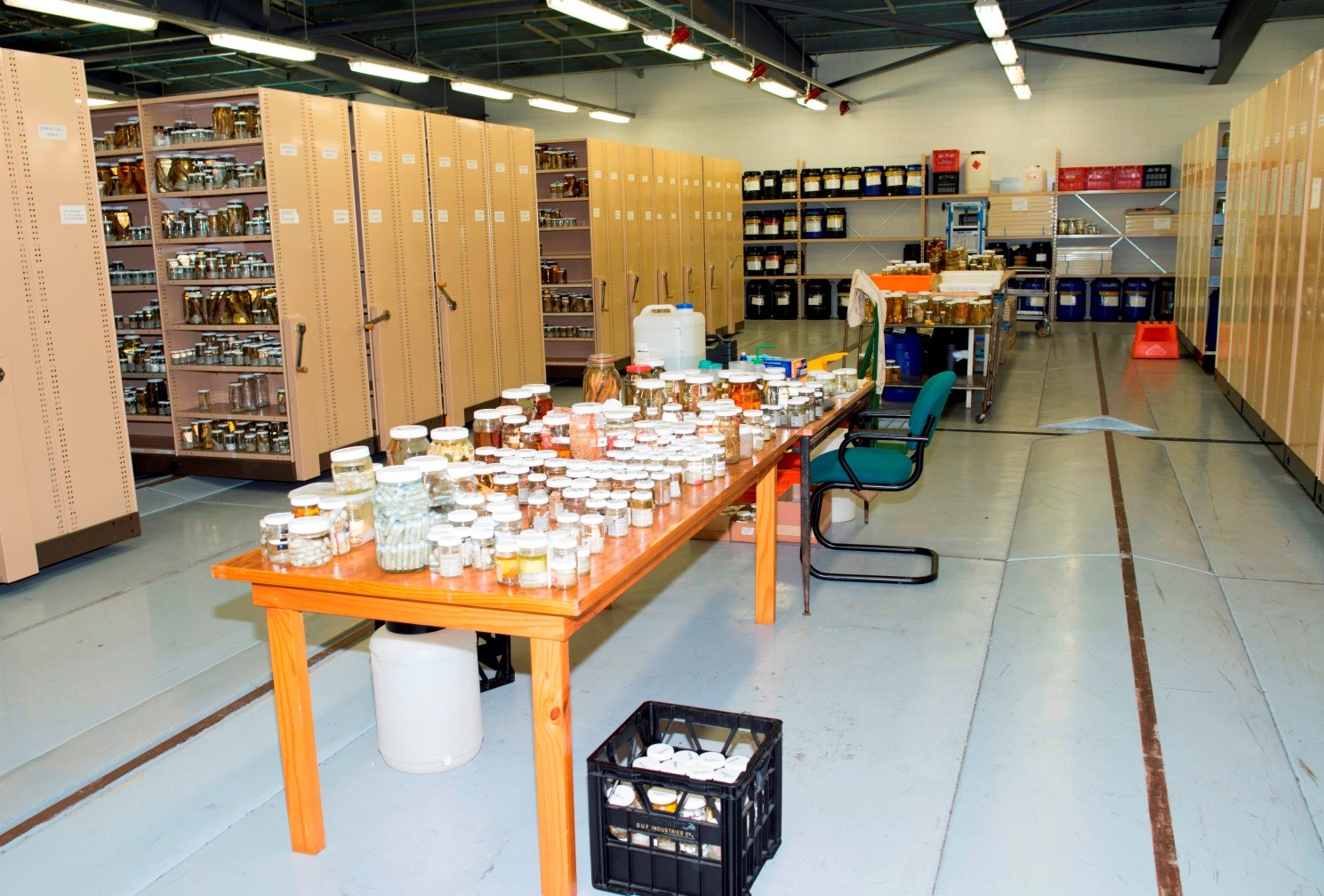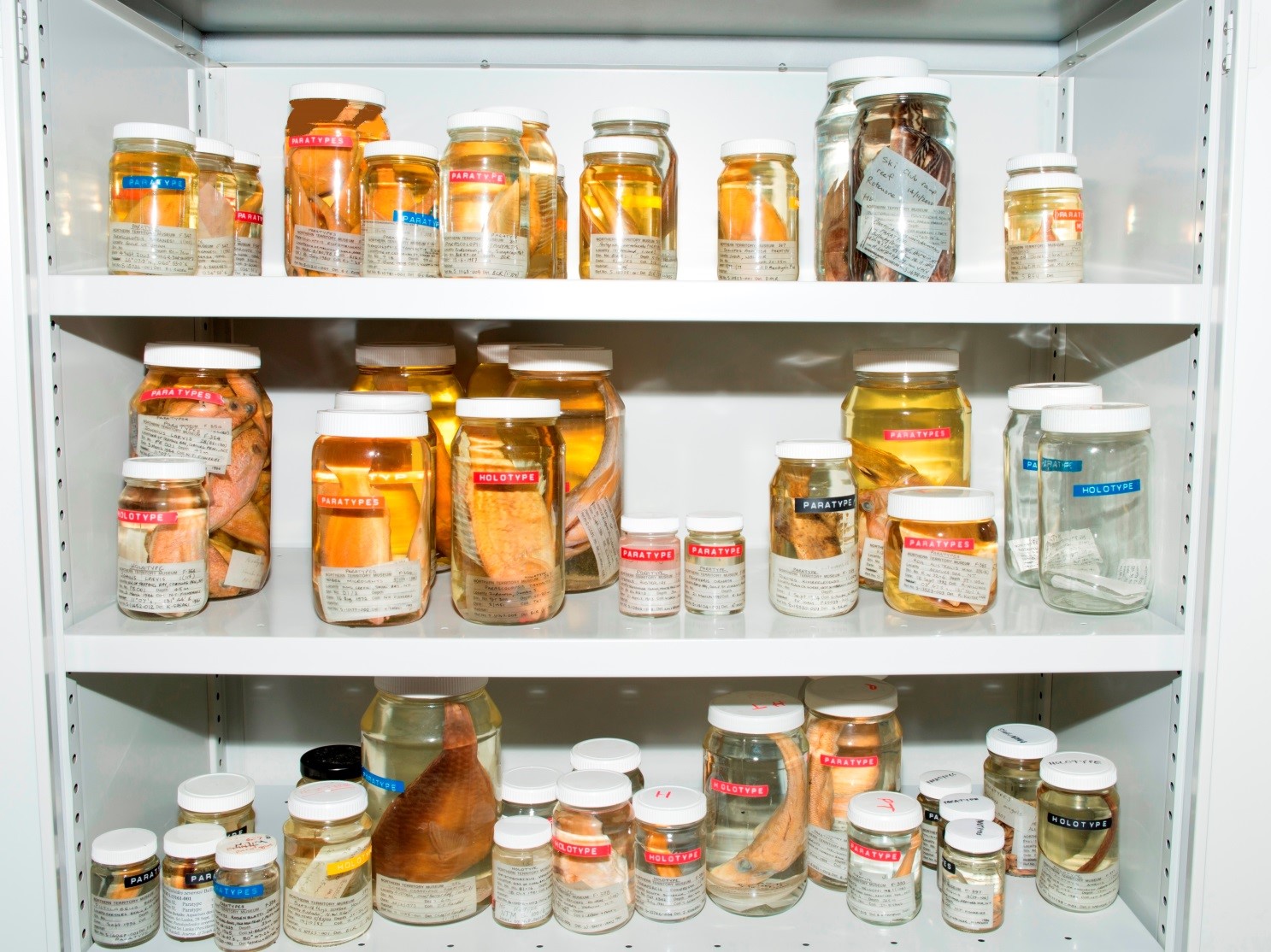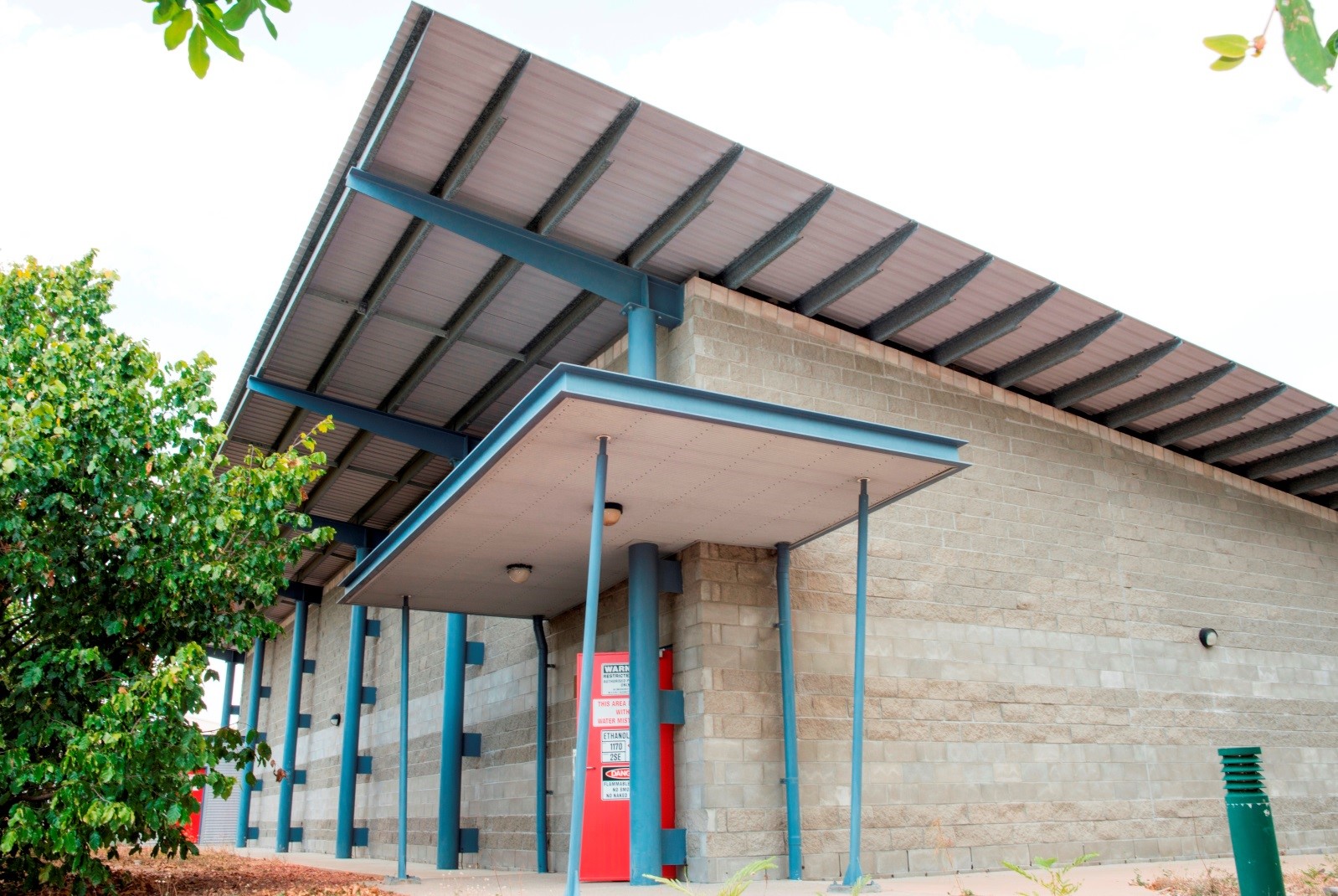The Museum and Art Gallery of the Northern Territory (MAGNT) was established in 1964, with the MAGNT’s first director, Dr Colin Jack-Hinton, appointed in 1970. The MAGNT (then known as the Northern Territory Museum of Arts and Sciences) was first housed in the Old Town Hall, built in 1883, in Darwin’s central business district.
Cyclone Tracy hit Darwin on Christmas Eve, 1974, devastating much of the city and destroying the Old Town Hall and damaging much of the MAGNT collection. For the next few years both the staff and collection were housed in multiple buildings around Darwin while the city underwent reconstruction.
Construction of a new purpose-built museum and art gallery began in 1979 at Bullocky Point, on the shores of Darwin Harbour. It was opened on the 10th of September, 1981.
The MAGNT also manages several other cultural facilities in the Northern Territory. The Defence of Darwin Experience chronicles the bombing of Darwin during the Second World War while the Fannie Bay Gaol and British-Australian Telegraph House are important historical sites. Located in Alice Springs is the Museum of Central Australia that holds the historic Finlayson Collection of arid zone mammals and an extensive collection of Miocene vertebrate fossils recovered from the Alcoota Scientific Reserve. The Strehlow Research Centre, also in Alice Springs, manages the Central Australian ethnographic collections made by TGH Strehlow at the start of the 20th century.
MAGNT Collections encompass Natural History, Aboriginal, Southeast Asian and Oceanic art and culture, Archaeology, the Visual Arts, and Maritime and Northern Territory History.
The MAGNT has curatorial expertise in palaeontology and marine taxonomy and systematics, which are underpinned by substantial collections of the region’s fishes, molluscs, corals, sponges, crustaceans and marine worms. The reptile, mammal, bird and terrestrial invertebrate collections are also significant, with extensive holdings of the northern and central Australian fauna. Specimens are variously held as wet preserved, dry, study skins or skeletal material and there is a growing collection of ethanol preserved tissue samples for genetic work. Our scientific collections are available for loan to bona fide researchers and we welcome research visitors.
MAGNT contributes data to the ALA via the Online Zoological Collections of Australian Museums (OZCAM), an initiative of the Council of Heads of Australian Museums (CHAFC).



